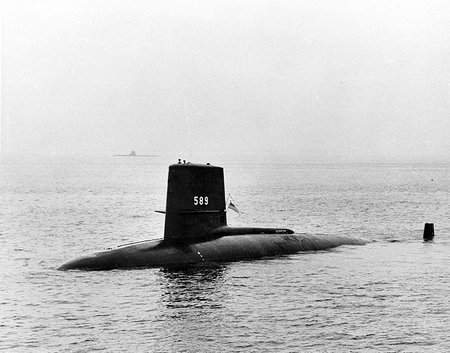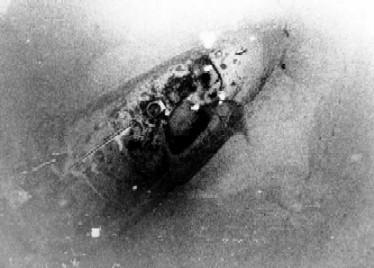

 By Raj Bhattacharya By Raj Bhattacharya
Raj, a seasoned travel writer and Bermuda destination expert, has extensive global travel experience. This website reflects his profound insights, garnered over nearly two decades of dedicated findings and research on the island. Raj has assisted countless Bermuda-bound visitors by providing direct, personalized responses to their queries and imparting his wealth of knowledge through this platform. This site serves as an indispensable guide for those seeking informed and reliable insights into Bermuda's treasures.
Know more about Raj Bhattacharya
|
Your Reviews
NOTE: I manually evaluate all posts and include only the ones that are original (not copy pasted from other sources) and having some serious matter.
Rhea E Crosley (June 2019)
I was on the Robert E Lee 601B and many submariners talked about different scenarios including Russian accidental confrontation. However, the battery scenarios on and the torpedo scenarios are very possible. No one can know for sure. These are the top 3. Time will tell. It maybe none of these.
George Hehner (April 2019)
I was the last person to get off the Scorpion in Norfork. I was the Tech Rep working on the MK18 Angle Solver. I have a movie of her transit through the BayBridge that day. I reported the condition of the FC System as terrible. MK 21 and Mk 18 were in need of replacement. My report was rejected. I also reported the condition of the MK112 on the 600 boat and managed to get it overhauled.
Gerry (April 2019)
This loss was tragic and affected all of us in USN Sub forces when it happened. I have enjoyed the various theories posted here and those told by others. Having served on an old ww2 diesel and old S3W reactor boat (Halibut); am not qualified to comment as other experts have. Of course I had an opinion like many of us did. The torpedo deal didn't make sense; however battery H2 explosion, cooling system failure in engine room did. Of course we Pacific sailors were aware of problems with the Russians/Soviets. I was teaching at S1C Prototype when it happened. It was a very sad day....
Gavin Smith (June 2018)
Did you know that Dr. Robert Ballard was assigned to find the wreck of the Scorpion? He asked the navy if he could search for the R. M. S. Titanic if he met the deadline for searching for the lost sub. The search for the Titanic was a cover up story for the Scorpion because the search for the Scorpion was at that time classified. It was recently declassified
Tom Moss (May 2018)
Greg, it's Tom your shipmate. I agree with what you wrote and we had knowledge about what many others would have no idea about. I spent many hours crawling over that battery and most people have no idea how large and heavy it was - each cell weighed a ton. When you look at published cutaways of the class, the battery well is never identified and it's location is highly relevant to the separation of the two pieces. Good to see your still kicking. We lost Don in 2010 to Cancer.
Greg (January 2018)
I served on the sister ship of Scorpion for several years. My first Leading Chief served on Scorpion during the sinking and was left behind for training. The one piece of evidence that I find most telling and you can find it in public photos taken of the site are that the masts were all ejected, which is indicative of an internal explosion rather than external. Having been a Battery Charging Electrician on the sister ship, this class of ship was famous for ventilation issues with regard to the battery well during equalizing battery charges. It was imperative during those charges to closely monitor for Hydrogen and I personally had to stop battery charges on Shark due to high Hydrogen in the well.
My personal theory is that there was a battery explosion which ended up deforming and rupturing the Negative tank causing uncontrolled flooding in the operations compartment. My reason for not fully trusting anything in the torpedo room is that the ship was designed to survive flooding in the torpedo room and during a hot run, that hatch is closed immediately. The ship cannot survive a flooded ops compartment. The Soviets had many opportunities to sink one of ours and never tried, my heartfelt sympathy to every family member or loved one of the brave men who have perished on our submarines. We all knew when we volunteered that the sea is unforgiving.
Wendy (September 2016)
This article was apparently written before the materials the authors of Blind Man's Bluff used were accessible. Gems of interest that were not mentioned in this article:
1) The demand for torpedoes at the time was so great that a third (not the usual submarine contractors) manufacturer was building batteries for the Mark 37 torpedo on a design that had a VERY small margin of safety.
2) One of these batteries, being subjected to a vibration test in a CONTROLLED ENVIRONMENT, nearly blew the door of the test room off and put several test engineers in the hospital. Test engineers were so concerned they drafted a strongly-worded recommendation to IMMEDIATELY remove all torpedoes of the affected batch from submarines ASAP. (i.e. their next available port of call)
3) Scorpion was sailing west, but acoustic analysis and her eventual resting place indicated she was heading east when she went down. Sub crews are trained to turn 180 when they have a hot-running torpedo in order to trigger a safety cut-off in the torpedo meant to prevent circular-running torpedoes. (This maneuver would have no effect on a warhead "cooking off" from an overheated battery.)
4) Scorpion had a severe vibration problem that had been left uncorrected due to budgetary cuts. It was so bad her XO refused to serve on her and was granted a transfer only if he agreed to remove his claim that she was unsafe from his official request.
5) At least one other submarine experienced a torpedo "cooking off" in the racks due to an overheated battery.
James Haxby (March 2016)
Some of the descriptions of the lost ship sound more like the Thresher than the Scorpion The scorpion was actually spying on Soviet subs, not just training. My theory on her loss is based on certain facts: 1. They had noted a recurring problem with noxious Freon leaks. 2. The running light covers were open as if she had been on the surface. 3. She was going backward when she disappeared. Therefore, I believe that she had to surface for air after a Freon leak, and upon reaching the surface encountered a ship of some kind, and backed up to try to avoid a collision, but to no avail. And the ship's crew, not wanting to cause an international incident between the super-powers, decided not to go public about the accident.
Kenneth Ward (November 2015)
If a torpedo blew up the bow would have been destroyed. When Ballard visited the Scorpion in 87, the battery well access hatch from lower level ops was recovered. Fragments of the battery was found embedded in the hatch. Scorpion was lost due to an explosion in the battery well. The nave light: On Scamp, the housing for the light was loose. We lashed it shut with rope prior to diving.
Tom Wilson (June 2015)
It has been determined "by long term expert analysis" that the Scorpion suffered two hydrogen explosions in her battery compartment beneath the bottom deck plates at the bottom of the Operations compartment in the bunking area. My Bunk was right above the deck and I slept just above the Battery Compartment. These two explosions were 0.5 seconds apart and had the explosive potential of 20 pounds of TNT Each. These explosions completely destroyed the Operations Compartment. This would lead to an out of Control decent through test depth and to an implosion. You can find the official report here: www.burtonsys.com/USS_Scorpion.html
BTW, I was assigned to the Scorpion's sister ship the USS Scamp SSN 588 for 4 years.
James J. Simpson (February 2015)
Initial event was an internal explosion in the Torpedo Room caused by a low yield detonation of a skid mounted torpedo. The cause of the detonation may never be known. The force of the explosion (over pressure) resulted in both the escape trunk personnel hatch and the torpedo loading hatch being blown open and detached from their hinges. Pictures of the wreck clearly show the detachment. Recent reanalysis of the sounds recorded at the time of the sinking, indicate the blown hatches to have occurred .5 seconds apart. The Torpedo Room flooded quite rapidly and the forward main ballast tank blow system may have failed due to the explosion. The resulting down angle prevented the ship from surfacing in the forward direction. Most likely, the crew tried to back the ship to the surface.
This may have been successful but a severe down angle still would have been present causing the propeller to repeatedly break the surface and submerge. This then resulted in stress to the propeller shaft causing it to break within the pressure hull, extruding through the seal mechanism and flooding the Engine Room. Flooding of the Engine Room would have been complete by the time the ship had descended to crush depth.
The hull collapse of the Auxiliary Machine Space resulted from the pressure on the Engine Room bulkhead and the pressure hull exterior stress of the AMR. This then caused the 'telescoping' of the Engine Room into the spaces forward of it. This then resulted in the rapid flooding, atmosphere pressurization and breach of the fuel oil tanks within the Operations Compartment. The resulting explosion caused the ship to break in two at the forward end of this compartment. The sequence of events stated here are the result of extensive review of the wreck site photos. Many who have speculated on the cause of the sinking have never reviewed the photos and may never have set foot in a submarine. I was qualified in submarines and crewed aboard one for 7 years, I know what I'm talking about.
Jim (Submariner) January 2015
Walt is incorrect, The Scorpions operating depth was limited by Sublant to 500 ft (not deep). Reactor Scrams do not cause a ship to sink, negative buoyancy does. The ship would not have scramed the reactor. that is pure speculation. The only people who know the exact reason, are those brave men who gave their life aboard that ship. May they rest in peace.
Walt (Ex-Submariner) November 2011
USS Scorpion sank not in the Triangle but across the Atlantic off the Azores. Sub was deep and doing training, they scrammed the reactor and could not get passive measures re-balanced and slipped backwards down past crush depth and imploded, the site is currently monitored for radio active leakage, none so far.
|